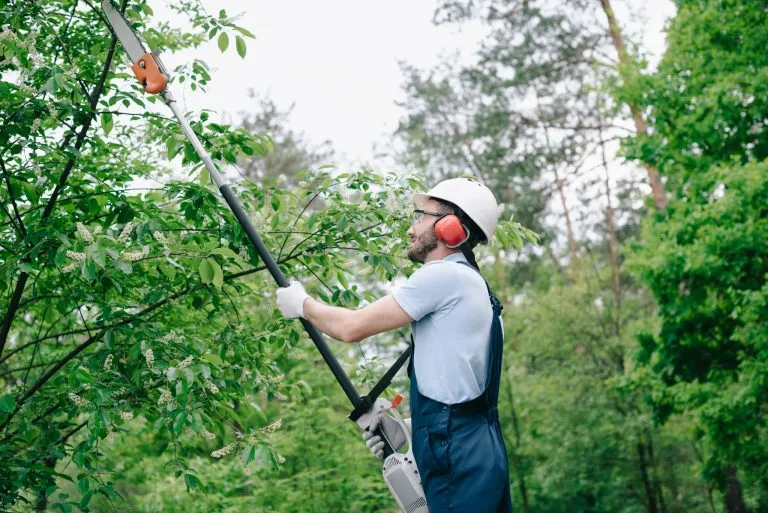In this article, we explore the ins and outs of tree cutting services, their benefits, common use cases, cost factors, and how to choose the right provider for your needs.
What Is Tree Cutting?
Tree cutting refers to the process of trimming or completely removing a tree from a property. It involves a range of services, from cutting down entire trees to selective branch removal. Depending on the scope and condition of the tree, cutting may involve climbing, the use of cranes, and chainsaws, or even highly technical equipment in urban or hazardous environments.
Tree cutting is not just about chopping down trees—it’s about managing tree growth, mitigating risks, and improving the aesthetics and health of your landscape.
Must Read: https://tododisca.com/
Common Reasons for Tree Cutting
1. Dead or Dying Trees
Trees that are no longer alive can become brittle and hazardous. They may fall unexpectedly, especially during storms, causing damage to property or injury.
2. Diseased or Infested Trees
Trees affected by fungal infections, pests (like emerald ash borer or termites), or other diseases may need to be removed to prevent spread to nearby healthy trees.
3. Storm Damage
Severe weather often leads to broken limbs or damaged trunks. If a tree is compromised structurally, it may need to be cut down for safety.
4. Interference with Structures
Overgrown trees may interfere with homes, power lines, fences, or other buildings. Cutting them prevents costly structural damage and liability issues.
5. Land Clearing for Development
Tree cutting is essential for construction projects, including new home building, road expansion, or commercial development.
6. Aesthetic or Landscape Design
Sometimes, trees are cut to improve views, balance landscape symmetry, or allow more sunlight into shaded areas.
Also Read: Recifest.com
Tree Cutting vs. Tree Trimming vs. Tree Removal
It’s important to understand the differences:
| Service | Purpose | Scope |
| Tree Cutting | General term for cutting branches or the entire tree | Moderate to full removal |
| Tree Trimming | Maintains shape, encourages growth | Light cutting, routine care |
| Tree Removal | Complete extraction of the tree and sometimes stump | Full tree removal, often for safety or land clearing |
Benefits of Professional Tree Cutting Services
Hiring a professional for tree cutting offers several advantages over doing it yourself:
1. Safety
Cutting trees—especially large ones or those near power lines—is dangerous. Professionals have the training and safety gear to do the job without risk to life or property.
2. Proper Equipment
Professionals use specialized tools like climbing gear, chainsaws, cranes, and rigging systems, which are not typically available to homeowners.
3. Time and Efficiency
Experienced crews can complete tasks quickly and efficiently, minimizing disruption and cleanup time.
4. Damage Prevention
Improper cutting can lead to falling limbs or trunks that damage nearby structures or plants. Professionals calculate fall directions and use techniques to control descent.
5. Debris Removal
Tree services often include branch and trunk removal, wood chipping, and cleanup, leaving your yard looking neat and hazard-free.
What’s Included in Tree Cutting Services?
A comprehensive tree cutting service may include:
- Tree inspection and assessment
- Safe cutting or dismantling of the tree
- Lowering branches and trunk sections
- Wood chipping or log cutting
- Stump grinding (if requested)
- Site cleanup and debris removal
Optional services may include emergency response, tree pruning, health treatments for nearby trees, and planting replacements.
When to Schedule Tree Cutting
Certain seasons are better than others for cutting trees:
Winter (Dormant Season)
- Ideal for cutting large trees
- Less sap flow and less chance of disease spread
- Clear visibility without leaves
Early Spring
- Good for preparing the landscape before growth starts
- Ideal for shaping trees
Avoid mid-spring to early summer if cutting live trees, as this is their growing season and stress from cutting can be harmful.
Emergency Situations
If a tree is damaged or poses an immediate threat, emergency cutting may be necessary regardless of the season.
Cost of Tree Cutting Services
Pricing depends on several factors:
1. Tree Size
Larger trees require more labor and equipment, making them more expensive to cut.
2. Location and Accessibility
Trees near power lines, homes, or on slopes are harder to reach and cut safely.
3. Tree Condition
Dead, diseased, or leaning trees may require special handling.
4. Cleanup Requirements
If you request wood removal, stump grinding, or full debris cleanup, the cost may increase.
5. Emergency Service
Urgent jobs (e.g., after a storm) may incur premium charges.
Average Costs:
- Small tree (under 30 feet): $150–$400
- Medium tree (30–60 feet): $400–$800
- Large tree (over 60 feet): $800–$2,000+
Always get a detailed quote from the contractor, and ask what’s included.
Choosing the Right Tree Cutting Service
Here’s what to look for when hiring a tree cutting professional:
1. Certification and Insurance
Ensure the company is licensed and carries liability and worker’s compensation insurance. Look for certifications like ISA (International Society of Arboriculture).
2. Experience and References
Ask about the company’s history and check online reviews or ask for references from past clients.
3. Transparent Pricing
Get a written estimate that details all costs. Avoid companies that offer vague or unusually low bids.
4. Proper Equipment
The best contractors use modern, well-maintained equipment and follow strict safety protocols.
5. Eco-Friendly Practices
Look for services that recycle wood, offer mulching, or suggest replanting.
DIY Tree Cutting: Is It Safe?
Tree cutting is not a safe or simple DIY task, especially for large or difficult trees. Without the right training and equipment, you risk:
- Serious injury or death
- Property damage
- Legal liability
- Improper cutting that damages other trees
For small trees (under 10 feet) or basic trimming, DIY might be okay. But anything larger or near structures should always be handled by professionals.
Environmental Considerations
Before cutting a tree, consider the environmental and legal implications:
- Tree Preservation Bylaws: Many municipalities have regulations protecting certain trees. Always check local laws before removing trees from private or commercial property.
- Wildlife Habitats: Trees may serve as homes for birds, squirrels, and other wildlife. Plan removal outside of nesting seasons or consult an arborist.
- Replanting Options: If you’re removing trees for construction or design, consider planting new ones to offset the environmental impact.
Final Thoughts
Tree cutting service is essential for safe, healthy, and attractive landscapes. Whether you’re dealing with a dangerous tree, planning a new construction project, or simply improving your yard, hiring a professional ensures the job is done right.
From safety to efficiency, expert tree cutting services offer peace of mind and long-term benefits. Don’t take chances with DIY approaches or unqualified contractors—your property and your safety deserve the best.



































